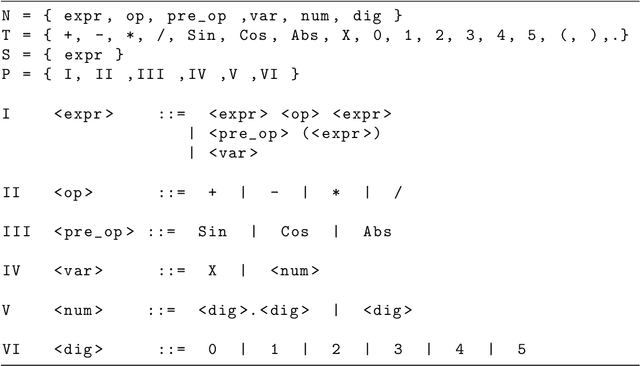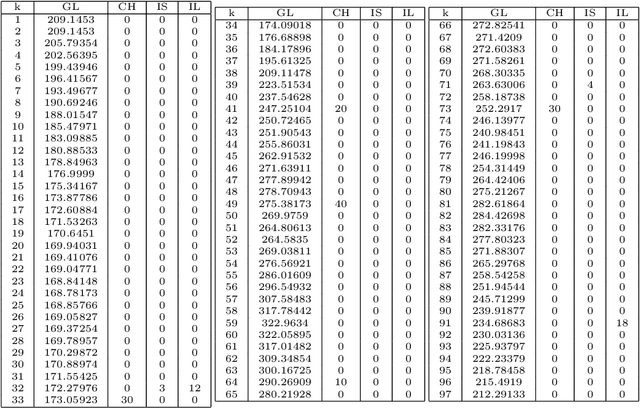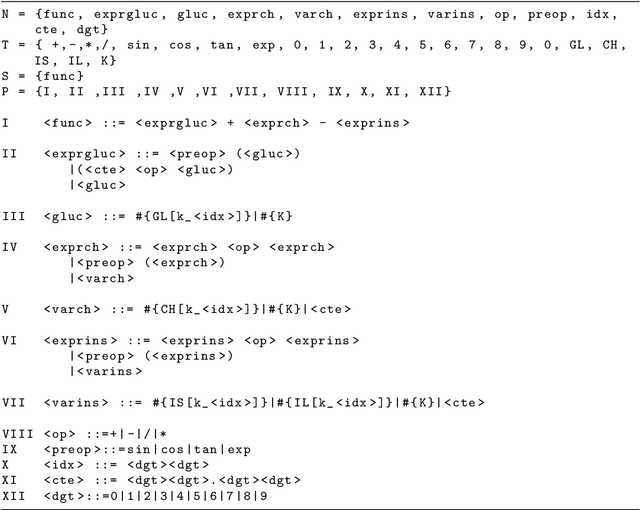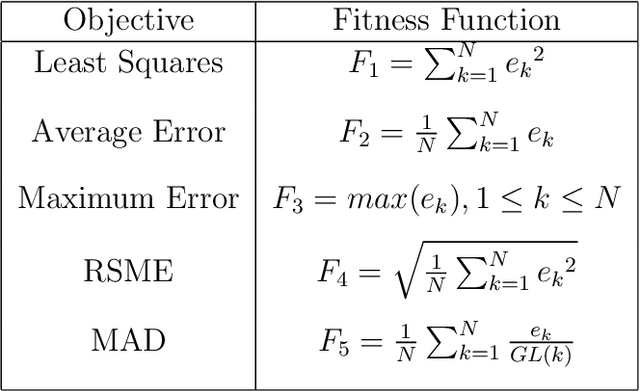J. Ignacio Hidalgo
Learning Difference Equations with Structured Grammatical Evolution for Postprandial Glycaemia Prediction
Jul 03, 2023



Abstract:People with diabetes must carefully monitor their blood glucose levels, especially after eating. Blood glucose regulation requires a proper combination of food intake and insulin boluses. Glucose prediction is vital to avoid dangerous post-meal complications in treating individuals with diabetes. Although traditional methods, such as artificial neural networks, have shown high accuracy rates, sometimes they are not suitable for developing personalised treatments by physicians due to their lack of interpretability. In this study, we propose a novel glucose prediction method emphasising interpretability: Interpretable Sparse Identification by Grammatical Evolution. Combined with a previous clustering stage, our approach provides finite difference equations to predict postprandial glucose levels up to two hours after meals. We divide the dataset into four-hour segments and perform clustering based on blood glucose values for the twohour window before the meal. Prediction models are trained for each cluster for the two-hour windows after meals, allowing predictions in 15-minute steps, yielding up to eight predictions at different time horizons. Prediction safety was evaluated based on Parkes Error Grid regions. Our technique produces safe predictions through explainable expressions, avoiding zones D (0.2% average) and E (0%) and reducing predictions on zone C (6.2%). In addition, our proposal has slightly better accuracy than other techniques, including sparse identification of non-linear dynamics and artificial neural networks. The results demonstrate that our proposal provides interpretable solutions without sacrificing prediction accuracy, offering a promising approach to glucose prediction in diabetes management that balances accuracy, interpretability, and computational efficiency.
Modeling glycemia in humans by means of Grammatical Evolution
Apr 27, 2023



Abstract:Diabetes mellitus is a disease that affects to hundreds of millions of people worldwide. Maintaining a good control of the disease is critical to avoid severe long-term complications. In recent years, several artificial pancreas systems have been proposed and developed, which are increasingly advanced. However there is still a lot of research to do. One of the main problems that arises in the (semi) automatic control of diabetes, is to get a model explaining how glycemia (glucose levels in blood) varies with insulin, food intakes and other factors, fitting the characteristics of each individual or patient. This paper proposes the application of evolutionary computation techniques to obtain customized models of patients, unlike most of previous approaches which obtain averaged models. The proposal is based on a kind of genetic programming based on grammars known as Grammatical Evolution (GE). The proposal has been tested with in-silico patient data and results are clearly positive. We present also a study of four different grammars and five objective functions. In the test phase the models characterized the glucose with a mean percentage average error of 13.69\%, modeling well also both hyper and hypoglycemic situations.
Patterns Detection in Glucose Time Series by Domain Transformations and Deep Learning
Mar 30, 2023



Abstract:People with diabetes have to manage their blood glucose level to keep it within an appropriate range. Predicting whether future glucose values will be outside the healthy threshold is of vital importance in order to take corrective actions to avoid potential health damage. In this paper we describe our research with the aim of predicting the future behavior of blood glucose levels, so that hypoglycemic events may be anticipated. The approach of this work is the application of transformation functions on glucose time series, and their use in convolutional neural networks. We have tested our proposed method using real data from 4 different diabetes patients with promising results.
Collaborative Multiobjective Evolutionary Algorithms in search of better Pareto Fronts. An application to trading systems
Nov 04, 2022Abstract:Technical indicators use graphic representations of data sets by applying various mathematical formulas to financial time series of prices. These formulas comprise a set of rules and parameters whose values are not necessarily known and depend on many factors: the market in which it operates, the size of the time window, and others. This paper focuses on the real-time optimization of the parameters applied for analyzing time series of data. In particular, we optimize the parameters of technical and financial indicators and propose other applications, such as glucose time series. We propose the combination of several Multi-objective Evolutionary Algorithms (MOEAs). Unlike other approaches, this paper applies a set of different MOEAs, collaborating to construct a global Pareto Set of solutions. Solutions for financial problems seek high returns with minimal risk. The optimization process is continuous and occurs at the same frequency as the investment time interval. This technique permits the application of non-dominated solutions obtained with different MOEAs simultaneously. Experimental results show that this technique increases the returns of the commonly used Buy \& Hold strategy and other multi-objective strategies, even for daily operations.
A Critical Review of the state-of-the-art on Deep Neural Networks for Blood Glucose Prediction in Patients with Diabetes
Sep 02, 2021



Abstract:This article compares ten recently proposed neural networks and proposes two ensemble neural network-based models for blood glucose prediction. All of them are tested under the same dataset, preprocessing workflow, and tools using the OhioT1DM Dataset at three different prediction horizons: 30, 60, and 120 minutes. We compare their performance using the most common metrics in blood glucose prediction and rank the best-performing ones using three methods devised for the statistical comparison of the performance of multiple algorithms: scmamp, model confidence set, and superior predictive ability. Our analysis highlights those models with the highest probability of being the best predictors, estimates the increase in error of the models that perform more poorly with respect to the best ones, and provides a guide for their use in clinical practice.
 Add to Chrome
Add to Chrome Add to Firefox
Add to Firefox Add to Edge
Add to Edge